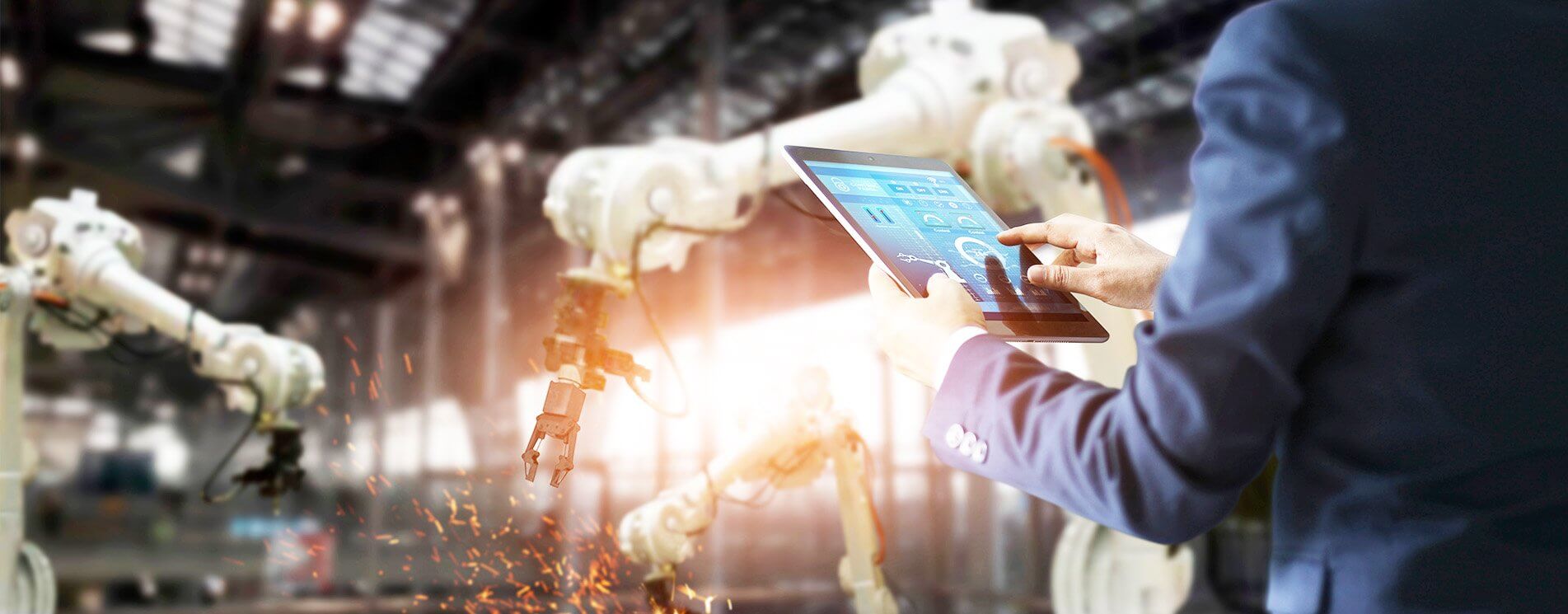Have you ever applied for a loan or credit card during the past two decades? Have you noticed how banks and agencies supply timelines ranging from a day to two or three months?
It’s because your application papers were being routed for different signatures and approvals from various stakeholders. Though it’s entirely beyond your control, those long queuing times should have been quickly expedited.
During the early 2000s, this scenario was one of the classic limitations of financial firms.
Today, your loan application can be approved within minutes through various online lending institutions. This is possible by automating repetitive processes, removing human intervention and letting a RPA process automation come into play.

Robotic process automation (RPA) refers to the automation of simple business processes. These are resolved through artificial intelligence (AI), Natural Language Processing (NLP), and machine learning (ML) features on robots. Such processes are then defined as a list of repetitively done functions.
Simply, automating your repetitive processes can produce quality output and efficiently use resources.
Here are 10 business processes now using RPA process automation technology.
1. Loan Applications and Approval
Loan applications and approval follow a standard set of steps. These include form completions, validation on the authenticity of data, background check, approvals or disapprovals of managers, and the consumer notice.
With RPA, the mortgage automation process is now sped through computer programs. They check the validity and authenticity of documents. They then supply approvals or disapprovals, whether documents are present or not.
2. End User Order Processing
Order processing originates from consumers selecting from a range of your products or services. They then call customer service representatives (CSRs) to place orders and make payments.
RPA works through graphical user interface (GUI) programs end users can access at anytime, anywhere, using various, convenient payment methods.
3. Automatic Replies: Acknowledgement Receipt
When complying with requirements, you typically end the process with an acknowledgment receipt copy for reference.
These are now simplified. They automatically send acknowledgment receipts in the form of emails, snail mail, text messages and other communication methods through computers. This happens once needed information is received into the system.

4. Call Center Operations: Outstanding Bills, Payment Queries
To avoid long queuing times from call center agents, this RPA technology uses chatbots to simplify the process.
Chatbots deliver automatic answers from frequently asked questions (FAQs). They send calls to agents, once questions go beyond their programmed logic.
This saves time for customers waiting to inquire about outstanding balances or payment crediting issues.
5. Payout Crediting
For industries using digital platforms to take time-bounded attendance of employees, RPA is used to generate payouts.
A computer analyzes the number of days, hours and minutes an employee has worked. It then credits automated amounts to the employee.
This allows HR teams to focus on other relevant functions, such as more employee benefits.
6. Scheduling
Where meetings are carried out daily, rather than an administrator contacting each stakeholder for every imminent appointment, RPA automatically runs a system check on stakeholders’ calendars. This is an easier approach to setting available schedules.
It can also be used to plan long- and short-term checkpoint schedules for customers.

7. Expense Reimbursements and Management
Instead of combining all receipts and physically giving them to your finance team, RPA, with the help of digital tools, now provides expense reimbursements.
It does this by taking pictures of receipts, which are validated through robotic processes for completeness and accuracy of information, such as name, address and tax numbers. It then automatically sends the corresponding expense amount, once approved.
8. Contract Renewals
After an original contract is placed in your system and servers, RPA can quickly track the generation of a new contract. These are simple contracts, such as an internet service provider (ISP) and telecommunications plan, whereby services are typically extended.
This helps avoid disruptions with these automated contract renewals, following end user and stakeholder approvals.
9. Account Payables Reconciliation
Overpayments and duplicate payments are among the most disputed claims by customers against product or service organizations.
RPA eliminates these. It automatically checks invoices and their matching payments, then rejects payments that don’t match.
This gives consumers time to correct their payments and avoid the lengthy process of reconciliations.
10. Employee Onboarding
While HR teams at various organizations onboard employees differently, there are standard functions, benefits and other related topics for existing and newly hired employees.
RPA can automatically and conveniently share and discuss these processes with these employees through an instructional learning format, delivering the same expected results.

Conclusion
Robotic process automation is already part of the 2020s. It’s just a matter of finding which of your business processes can be automated to help improve lifestyles and the way of doing business.
And, with RPA, comes other digitalization tools, which are being implemented in various organizations.
[Watch on-demand webinar: How Small and Mid-Sized Businesses Overcome Automation Barriers]
System Soft Technologies can help your organization streamline business processes, with the intent of you hitting your revenue goals under challenging conditions and less staff.
For those organizations not yet using RPA, there are questions about where to begin. Others have begun their RPA journeys but are now looking for ways to avoid problematic implementations and use best practices to scale.
System Soft holds a two- to three-hour workshop with clients to examine their situation. We then partner with you to find answers to your questions and strategize how to tackle your issues.
Click here to learn more about our free RPA workshop.
[Watch on-demand webinar: Cutting Through the Hype of Hyperautomation]
About the Author: Thomas C. Helfrich

As Vice President of the Intelligent Automation Practice at System Soft Technologies, Tom uses emerging technologies, including artificial intelligence, machine learning and robotic process automation, to drive disruptive business performance and help customers offset operational and financial challenges. His powerful knowledge of Blue Prism, Automation Anywhere, UiPath and Datamatics, as well as his expertise in the application of advanced technologies, spurs cost-effective business scale through automating processes and augmenting humans.
